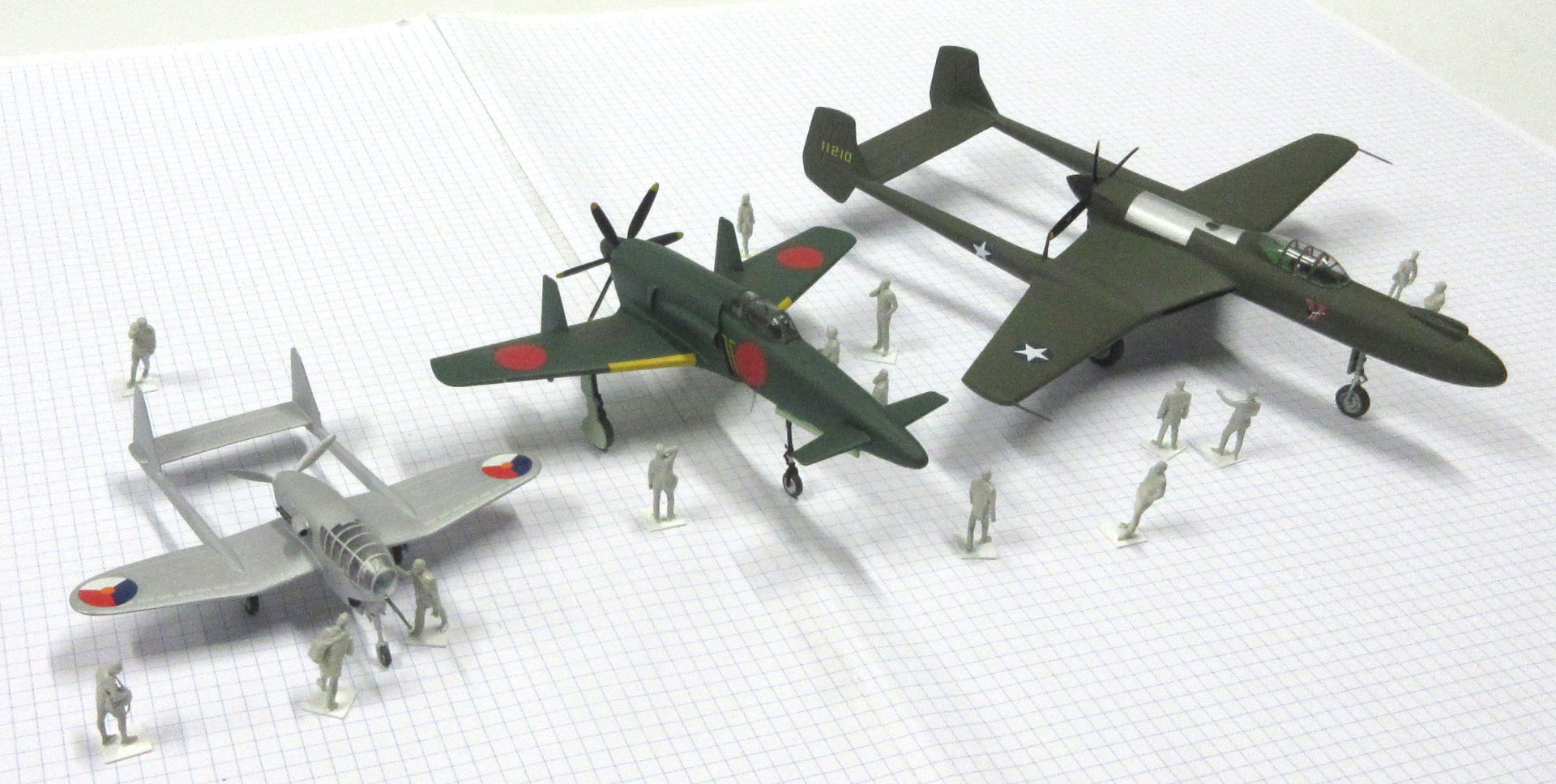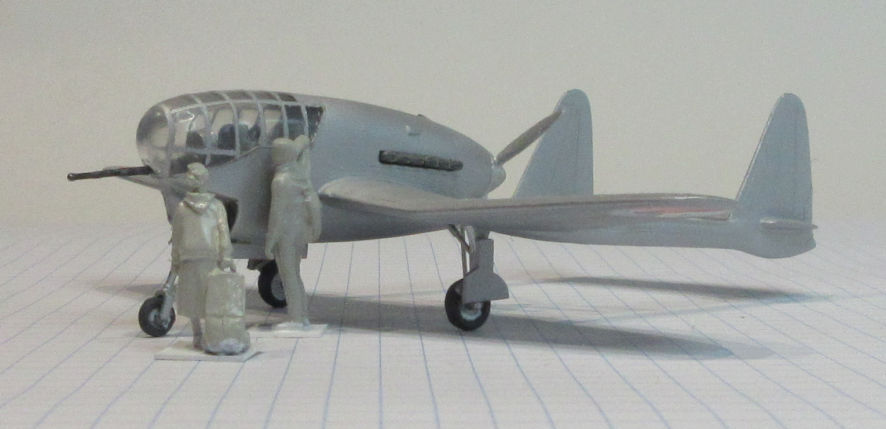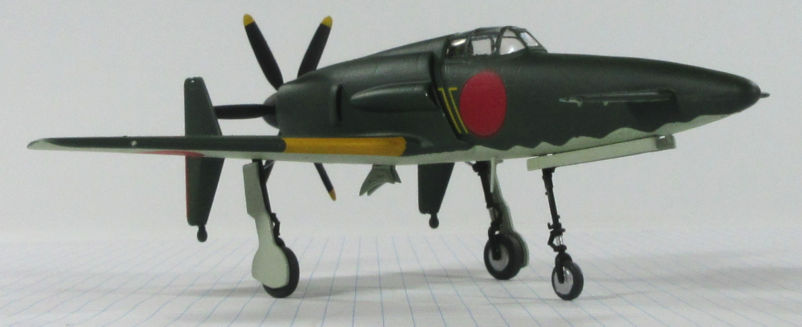Pusher Warplanes
De Schelde S.21 – Kyushu J8W1 – Vultee XP-54

When we wander around the museum we take it for granted that propeller driven aircraft have their engines and propellers at the front of the aircraft. But very occasionally there is one with the propeller at the back. At the beginning of aviation it was just as common for the propeller to be at the front or the back but soon pusher propellers fell out of favour and have remained that way ever since. Except that occasionally the advantages of mounting the propeller of the aircraft at the back seemed to be a good idea and the idea was tried again, but unsuccessfully. The three we’re going to look at today never made it past the prototype stage.
De Schelde S-21 in 1/72 by RS Models
Three of the advantages of pusher aircraft is that the fuselage can be shorter, the pilot can have a better forward view without having a big engine in front of them and the weapons can be centrally mounted for greater accuracy and hitting power. The De Schelde S-21 took advantage of this with four machine guns and a 23mm grouped close together in the nose. De Schelde was a Netherlands ship building company that got into the aircraft business when it took over most of the design team from another company. Design of the S-21began in 1939 and the prototype was almost complete when the Germans invaded Holland in 1940. They took it away for study and it was tested to destruction.
There is only one kit of this aircraft, published in 2009 by RS Models. It seems to have sneaked onto the model shop shelves without much notice and seems to have disappeared just as quietly, although there seem to be some available from internet shops. I don’t recall any particular problems with making this kit apart from a general sense of fragility, but the in-box review on Modelling Madness mentions problems with flash. There are some nice pictures of one in camoflage colours with the full weathering treatment on the Britmodeller forum.
Kyushu J7W1 in 1/72 by Hasegawa
In this aircraft the pusher arrangement was part of the original design concept for an aircraft that could eventually be fitted with a jet engine. The canard design, with the order of wings and tail reversed also allowed the engine to sit right in the centre of gravity and, as with other pushers, allow excellent pilot visibility and a four cannon armament grouped close together in the nose. It also showed one of the problems with pusher designs in needing long undercarriage to give the propeller sufficient ground clearance. The J7W1 was designed to be a high performance interceptor to destroy attacking B-29s. Design work began in 1943, construction of two prototypes began in 1944 and the first prototype made three flights before the end of the war.
There have been two kits published of this aircraft. The first was the Tamiya version that was first published in 1965 and I recall making it a few years later. For the period it was a fairly good kit. However, the Hasegawa kit, that was first published in 1995 and has appeared in quite a number of different boxes since, is far superior and making this model is a very good experience. It’s unique appearance makes the J7W1 a popular model to build so you can find a decent build review on the Modelling Madness website , the Britmodeller forum and the International Scale Modeller forum.
Vultee XP-54 in 1/72 by Planet
When the US Army Air Corps sought proposals from the US aircraft manufacturing industry for innovative designs it received three submissions, all for pusher aircraft. The other two designs, the Curtiss XP-55 and Northrop XP-56, had more in common with the Kyushu J7W1 while the XP-54 had a more conventional twin boom tail. It had many of the advantages of other pusher aircraft but also the problem of propeller ground clearance which necessitated long undercarriage legs. Two prototypes were built and tested in 1943 but problems with the engine, which did not enter production, meant that this aircraft was also not considered for production.
 This model was made using the Planet resin kit which was up to that company’s usual good standards. It is not an outstanding kit but when it is assembled with reasonable skill the result looks like a XP-54. The only other options to make this model are an ancient Execuform vacform kit (which is probably unobtainable these days, and would be very hard work anyhow) and a RS Models resin kit from the 1990s. An in-box review of the Planet kit on Hyperscale is quite positive. There is also a build review on the Modelling Madness website of the ancient vacform kit which demonstrates what can be done with skill and patience with any kit.
This model was made using the Planet resin kit which was up to that company’s usual good standards. It is not an outstanding kit but when it is assembled with reasonable skill the result looks like a XP-54. The only other options to make this model are an ancient Execuform vacform kit (which is probably unobtainable these days, and would be very hard work anyhow) and a RS Models resin kit from the 1990s. An in-box review of the Planet kit on Hyperscale is quite positive. There is also a build review on the Modelling Madness website of the ancient vacform kit which demonstrates what can be done with skill and patience with any kit.


